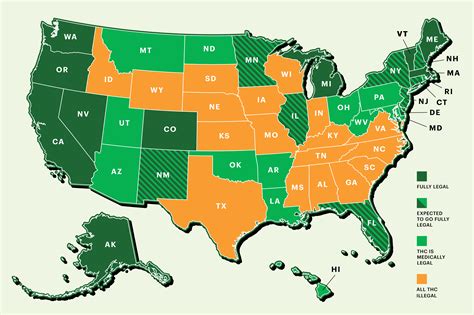The ongoing debate and policy shifts surrounding marijuana legalization in the United States present a complex and evolving landscape. Marijuana, despite being the most commonly used federally illegal drug, sees a growing divergence between federal law and state-level reforms. As of March 1, 2023, 21 states, along with Washington D.C., Guam, and the Northern Mariana Islands, have enacted laws permitting recreational marijuana use. This marks a significant shift from historical perspectives and legal frameworks.
Historically, cannabis was legally used in the U.S. during the 1800s, primarily for therapeutic purposes. However, the advent of synthetic painkillers and increasing concerns about cannabis-related violence led to the prohibition of its recreational use in 1937. Access for medical purposes also became highly restrictive. Despite this federal stance, states have progressively moved towards legalizing marijuana, both for medical and recreational purposes. This shift began in 1996 when California became the first state to legalize medical marijuana. By 2017, 29 states and the District of Columbia, representing 63% of the U.S. population, had legalized medical marijuana, while eight states and the District of Columbia, representing 21% of the U.S. population, had legalized recreational use.
The Centers for Disease Control and Prevention (CDC) acknowledges marijuana as the most commonly used federally illegal drug in the United States, with an estimated 48.2 million users in 2019. The CDC’s involvement underscores the public health dimensions of marijuana use, focusing on understanding and addressing related health concerns. Despite this, the federal Controlled Substances Act (CSA) continues to criminalize activities related to marijuana, creating a significant policy gap between federal and state laws. This disparity is further complicated by recent developments, such as President Biden’s announcement of a pardon for all prior federal offenses of simple possession of marijuana, indicating a potential shift in federal policy.
This evolving legal and social landscape presents various implications for public health, regulatory frameworks, and societal perceptions of marijuana. As more states legalize its medical and recreational use, the tension between state laws and federal regulations continues to be a subject of significant debate and analysis.

For detailed information on these developments, refer to the following sources:
Recent Developments in Marijuana Law – CRS Reports,
What We Know about Marijuana – Centers for Disease Control and Prevention,
Cannabis Legalization in the US,
Statement from President Biden on Marijuana Reform,
Marijuana and Public Health – Centers for Disease Control and Prevention.